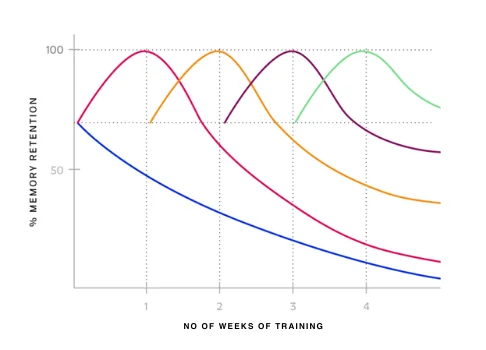
Must Know Onboarding Statistics 2023
Employee onboarding is a critical process that sets the stage for an employee’s journey with a company. It involves integrating new hires into the organization, providing them with the necessary tools, knowledge, and support to succeed in their roles. In this long-form blog, we will explore the top must-know onboarding statistics that highlight the importance of effective onboarding practices. These statistics will shed light on the benefits of investing in a robust onboarding program and provide valuable insights for organizations looking to optimize their onboarding processes.
1. The Impact of a Strong Onboarding Program
A strong employee onboarding program can have a profound impact on an organization. It sets the stage for new hires to feel welcomed, supported, and equipped to contribute effectively from day one. From the moment an employee joins the company, a well-designed onboarding program ensures they are provided with the necessary resources, training, and information to understand their role and responsibilities. This not only boosts their confidence but also accelerates their integration into the team and the overall organizational culture. Additionally, an effective onboarding program nurtures a sense of belonging and engagement among employees, leading to higher retention rates and increased productivity. By investing in a robust onboarding process, companies can foster a positive work environment, enhance employee satisfaction, and ultimately drive business success.
Companies with a well-structured onboarding process experience 54% greater new hire productivity
Effective onboarding programs can improve employee retention by 82%
Organizations with effective onboarding processes see 50% higher new employee retention rates
2. The Role of Technology in Onboarding
Technology plays a crucial role in streamlining and enhancing the onboarding process for new employees. From online portals and software applications to virtual training modules, technology offers numerous benefits that make the entire onboarding experience more efficient and effective. Firstly, it enables companies to automate administrative tasks such as paperwork, document signing, and form filling, saving valuable time and reducing the risk of errors. Additionally, technology allows for the seamless sharing of information and resources, ensuring that new hires have access to all the necessary materials they require to succeed in their roles. Virtual training programs and e-learning platforms enable employees to learn at their own pace, anytime and anywhere, making the onboarding process more flexible and accessible. Furthermore, technology facilitates better communication and collaboration among team members, fostering connectivity and relationship-building, especially in remote or distributed work environments. Overall, incorporating technology into the onboarding process not only increases efficiency but also enhances the employee experience, leading to higher engagement, retention rates, and long-term success for both the individual and the organization.
Organizations that use technology for onboarding see 50% higher productivity levels in new hires
77% of HR professionals believe that automation technology improves the onboarding experience
3. The Importance of Onboarding Duration
The duration of an employee onboarding program is of utmost importance as it sets the stage for a successful integration into the company. A well-designed and comprehensive onboarding program that spans an appropriate length of time can greatly influence an employee’s engagement, productivity, and long-term success within the organization. A brief and rushed onboarding program may leave new hires feeling overwhelmed and ill-prepared to tackle their responsibilities, leading to potential mistakes and a lack of confidence. On the other hand, an overly lengthy onboarding process can result in disengagement and boredom, as new employees may feel like they are not making progress or being challenged. Striking the right balance in the duration of the onboarding program enables new hires to gain the necessary knowledge, skills, and relationships needed to become productive members of the team while also ensuring they feel supported, valued, and ready to contribute. By investing in a well-structured onboarding program that spans an appropriate timeframe, companies can maximize the potential of their new employees, foster a positive work culture, and ultimately drive organizational success.
4. The Role of Manager Involvement
Manager involvement is crucial during the onboarding process of new employees. When managers actively participate in onboarding, it sends a strong message to the new hires that they are valued and supported by the organization. Managers play a vital role in introducing new employees to the team, providing guidance, and clarifying expectations. They can offer insights into the company culture, provide context for the role, and offer support in navigating the organizational structure. Manager involvement also helps establish clear communication channels from the start, enabling new hires to feel comfortable seeking guidance and asking questions. Additionally, managers can set goals and objectives, provide feedback, and monitor progress during the onboarding period. This level of involvement not only accelerates the integration process but also fosters a sense of trust and connection between the new employee and their manager. Ultimately, when managers actively engage in the onboarding process, they contribute to the new hire’s sense of belonging, motivation, and overall success within the organization.
5. The Impact of Personalized Onboarding
Personalized onboarding for new employees has a significant impact on their overall experience and success within an organization. By tailoring the onboarding process to meet the unique needs and preferences of each individual, companies can create a more engaging and effective onboarding experience. Personalization allows new hires to feel valued and supported right from the start, leading to higher levels of engagement, job satisfaction, and retention. When onboarding is personalized, it enables new employees to receive the specific information, resources, and training necessary for their roles, enabling them to quickly become productive contributors. Additionally, personalized onboarding helps build stronger connections between new hires and their team members, managers, and mentors. By understanding the individual’s background, interests, and goals, personalized onboarding enables organizations to provide a more tailored and meaningful experience. This level of personalization not only strengthens the employee’s sense of belonging but also positively impacts their long-term commitment and loyalty to the company. Overall, personalized onboarding sets the stage for a successful employee journey, fostering a positive work culture and driving organizational growth.
Organizations that deliver personalized onboarding experiences see 63% greater employee engagement
The statistics surrounding effective employee onboarding highlight its significance in driving productivity, retention, engagement, and overall business success. By implementing a well-structured onboarding program, leveraging technology, involving managers, and personalizing the experience, organizations can unlock the full potential of their new hires. Investing in a robust onboarding process is not only beneficial for new employees but also for the company as a whole. By understanding and utilizing these must-know onboarding statistics, organizations can pave the way for long-lasting employee success and organizational growth.
Onboarding with Wranx is super easy. You can train new starters on anything from your products and services, to company culture, or policies and procedures in 30 days or less. New starters love that training takes just 2 minutes per day and can be completed on the go. Whilst your HR team and hiring managers can quickly and easily enroll new employees on training modules which are relevant to their job role in seconds. See how you can supercharge your employee training program – Book a demo here.




